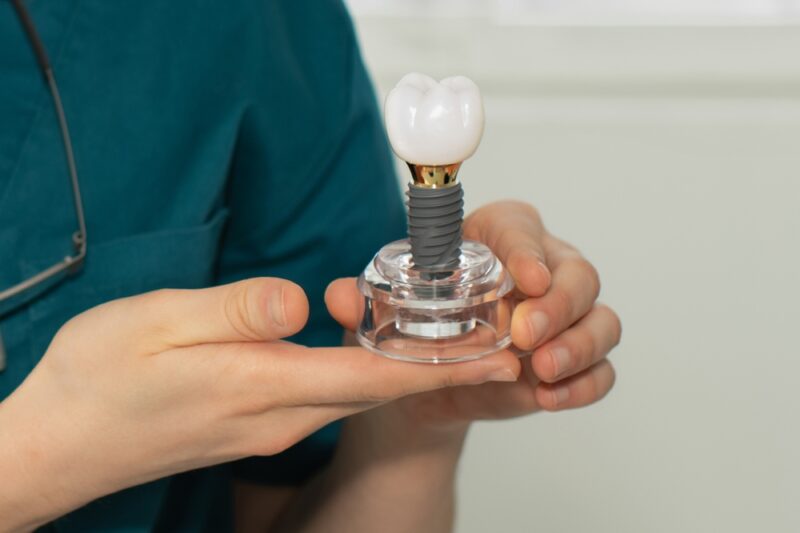Oral health is often viewed as separate from general health, but the reality is far more connected. One of the most compelling examples of this relationship is the link between periodontal (gum) disease and stroke. While they may seem unrelated, gum disease and stroke share underlying factors that reveal just how important it is to care for the entire body, starting with the mouth.
Understanding Periodontal Disease
Periodontal disease is a chronic infection of the gums caused by bacterial buildup along the gumline. When plaque and tartar are not removed, the gums respond with inflammation. In its early stages, gingivitis causes swelling, tenderness, and bleeding. Left untreated, it progresses to periodontitis, which can lead to gum recession, bone loss, and ultimately, tooth loss.
But beyond the damage it does locally, periodontal disease can set off a chain reaction throughout the body. Because the mouth is full of blood vessels and closely connected to the circulatory system, the inflammation and bacteria involved in gum disease have the potential to influence far more than your smile.
A Closer Look at Stroke
A stroke occurs when blood flow to the brain is disrupted, either by a blockage (ischemic stroke) or a rupture in a blood vessel (hemorrhagic stroke). Without a steady flow of oxygen-rich blood, brain cells can be damaged or die within minutes. Stroke remains one of the leading causes of disability and death worldwide, and it often happens without warning.
Known risk factors for stroke include high blood pressure, diabetes, high cholesterol, smoking, and lack of physical activity. In recent years, however, periodontal disease has joined the list of potential contributors, particularly when it’s persistent and untreated.
The Inflammatory Link
The key connection between periodontal disease and stroke lies in inflammation.
When your gums are inflamed for an extended period, your body produces chemicals and immune responses that contribute to a state of chronic, low-grade inflammation. This inflammation doesn’t remain isolated to the gums. It enters the bloodstream, affecting arteries and organs throughout the body, including the brain.
The consequences of this systemic inflammation may include:
- Damaged blood vessel walls: Ongoing inflammation can contribute to the buildup of plaque in the arteries (atherosclerosis), increasing the risk of a clot that could block blood flow to the brain.
- Bacterial migration: The bacteria responsible for gum disease can travel through the bloodstream and trigger immune responses in distant areas of the body. In some cases, this may contribute to clot formation or blood vessel damage.
- Increased clotting risk: Inflammatory responses can increase the likelihood of clots forming, raising the risk of ischemic stroke.
In this way, untreated gum disease may not directly cause a stroke, but it can raise the overall level of risk, especially when combined with other cardiovascular risk factors.
Recognizing the Signs Early
Because gum disease often progresses slowly and without pain, many people aren’t aware of it until more serious symptoms appear. Recognizing early signs can make a significant difference:
- Gums that bleed when brushing or flossing
- Red, swollen, or tender gums
- Persistent bad breath
- A receding gumline or “longer” looking teeth
- Loose teeth or changes in bite alignment
Regular dental checkups are key in identifying these changes before they become serious. If caught early, periodontal disease can be managed and the inflammation it causes can be greatly reduced.
Prevention: A Whole-Body Strategy
Keeping your gums healthy is one of the simplest ways to support your overall health. Preventing periodontal disease isn’t just about fresh breath and healthy teeth, it’s part of a larger strategy to reduce systemic inflammation and protect your long-term wellness.
Practical steps include:
- Brushing twice daily with fluoride toothpaste
- Flossing at least once a day
- Using an antimicrobial rinse if advised by your dentist
- Keeping routine dental appointments
- Quitting tobacco and managing stress
- Eating a diet rich in whole foods and nutrients
If you already have signs of gum disease, your provider may recommend specialized treatments such as scaling and root planing to remove plaque and tartar beneath the gums and reduce bacterial levels.
The connection between periodontal disease and stroke is a powerful reminder that oral health is deeply tied to overall health. Inflammation in one part of the body can have ripple effects elsewhere, and gum disease is no exception.
Taking care of your gums may seem like a small daily habit, but it’s one that could make a significant difference in your health for years to come. Whether you’re concerned about gum disease or simply due for a checkup, staying proactive can help protect more than just your smile.
Choose Aloe Dental Wellness For All Your Dentistry Needs
At Aloe Dental Wellness, you can expect the very best in dental care with Dr. Daniela Cadavid. Before your appointment, you can expect to enjoy soothing music and fresh coffee, tea, and water in our relaxing patient lounge. Our office is a child-friendly, family-oriented environment, and we pride ourselves on the ability to make patients of all ages comfortable.
Dr. Cadavid is glad to offer a brand-new office equipped with the latest technology and services in both English and Spanish to UCSB students and staff, as well as the surrounding communities. Aloe Dental Wellness in Santa Barbara County is proud to provide general, cosmetic, and emergency dentistry services to meet the needs of your entire family as well. For an appointment, call us at 805-454-7727 today.




